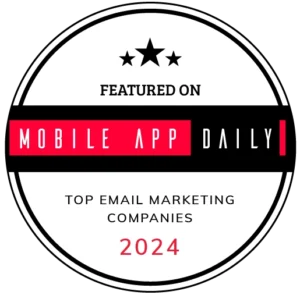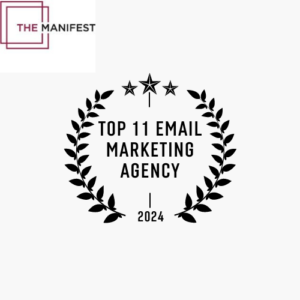Lead generation is crucial for any business aiming to grow and succeed. Whether you’re a student learning about marketing, a working professional looking to enhance your skills, or a startup founder striving to boost your company’s sales, understanding the different methods of lead generation can be a game-changer.
In this blog, we’ll explore Inbound Lead Generation and Outbound Lead Generation, comparing their strategies, benefits, and real-world examples to help you make informed decisions.
What is Lead Generation?
Lead generation refers to the process of attracting and converting potential customers (leads) into someone who has shown interest in your product or service. It’s a vital part of any business’s marketing strategy, helping to fuel the sales pipeline and drive growth. There are two primary methods: Inbound Lead Generation and Outbound Lead Generation.
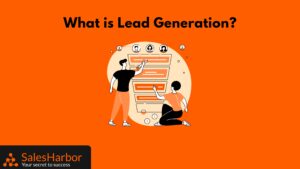
What is Inbound Lead Generation?
Inbound Lead Generation focuses on drawing potential customers to your business by offering valuable content and experiences that align with their interests.
For instance, this blog you’re reading is a perfect example of inbound marketing. By providing insightful information on lead generation, we aim to attract and engage those seeking to enhance their marketing strategies.
Examples of inbound marketing include Blog Posts, eBooks, Webinars, Social Media Content, Email Newsletters etc.
To learn more explore the top inbound lead generation strategies for 2024 in this blog – 6 Ways to Generate Inbound B2B Leads in 2024
Key Strategies for Inbound Lead Generation
1. Content Marketing
Content marketing is the backbone of inbound lead generation. For example, a startup founder might create blog posts about industry trends to attract potential customers. By providing insightful, high-quality content, you can establish your brand as an authority and naturally draw in leads who are already interested in what you offer.
2. SEO (Search Engine Optimization)
SEO is all about optimizing your website to rank higher on search engine results pages (SERPs). An e-commerce business, for instance, might optimize product pages with keywords like “affordable running shoes” to attract customers searching for that specific item on Google.
3. Social Media Marketing
Social media platforms like LinkedIn and Instagram can be powerful tools for inbound lead generation. A law firm, for example, might share legal tips on LinkedIn to engage with potential clients who are looking for free advice before making a hiring decision.
4. Email Marketing
Email marketing allows you to nurture leads by sending them valuable information directly to their inboxes. A SaaS company might send a monthly newsletter filled with tips on how to get the most out of their software, keeping leads engaged and informed.
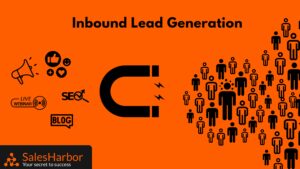
Benefits of Inbound Lead Generation
1. Cost-Effectiveness
Inbound marketing strategies are generally more cost-effective compared to outbound methods. By utilizing free or low-cost tools such as blogs, social media, and SEO, businesses can attract and engage potential customers without incurring the high costs associated with paid advertising and direct outreach.
Tools like HubSpot for CRM, Buffer for social media management, Canva for visual content, and Google Analytics for performance tracking.
2. Building Trust Over Time
Consistently providing valuable and relevant content helps build trust with your audience. Over time, this trust fosters stronger relationships, as your audience comes to see you as a reliable and knowledgeable resource. This approach enhances brand loyalty and can lead to long-term customer retention.
3. Attracting Interested Customers
Inbound marketing attracts customers who are already interested in your products or services, as they actively seek out and engage with your content. This means these leads are often more qualified and likely to convert, as they have demonstrated a genuine interest in what you offer.
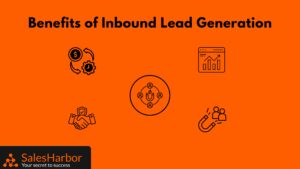
What is Outbound Lead Generation?
Outbound Lead Generation involves reaching out directly to potential customers through various methods like cold calling, email outreach, and paid advertising. Unlike inbound, where the customers come to you, outbound strategies require you to go to them.
For example, receiving a call from your bank offering a new credit card. This is a classic outbound lead generation tactic where the bank proactively contacts you to introduce their product.
Key Strategies for Outbound Lead Generation
1. Cold Calling
Cold calling is a direct outbound strategy where businesses reach out to potential customers via phone to introduce their products or services. This method involves proactively contacting individuals who have not previously expressed interest, aiming to generate new leads or sales.
Cold calling can be effective for presenting special offers, new product launches, or promotional events. This allows businesses to directly engage with potential customers and drive immediate responses.
2. Email Outreach
Email outreach is a powerful outbound strategy where businesses send targeted emails to potential customers. For example, a local gym could identify nearby residents who recently searched for fitness classes online. The gym could then send them personalized emails offering a free trial or discounted membership, addressing their fitness goals.
This direct approach helps the gym connect with interested individuals and boost sign-ups quickly.
3. Paid Advertising
Paid advertising allows businesses to quickly reach a targeted audience through platforms like Google ads and Meta Ads.
For example, Amazon or Flipkart might use Google Ads to promote new smartphones by targeting users searching for them. This ensures Amazon’s ads appear prominently, driving traffic and boosting sales. Paid ads provide immediate visibility and can significantly increase conversions.
4. Direct Mail
Direct mail remains effective in certain industries despite its traditional nature. For example, a real estate company might send brochures to potential buyers, highlighting new properties and exclusive offers. This personalized approach can capture attention and drive engagement, especially in local markets.
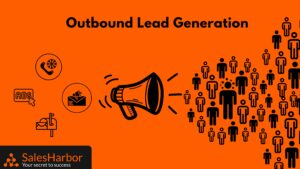
Benefits of Outbound Lead Generation
1. Immediate Results
Outbound lead generation delivers quick outcomes by directly engaging potential customers. Techniques like targeted ads and direct outreach can rapidly boost traffic and sales.
2. Reaching a Wider Audience
Outbound strategies are ideal for reaching a broader audience, including those unfamiliar with your brand. By actively reaching out, businesses can attract new customers and increase visibility.
3. Easy to Scale
Outbound methods are easily scalable, allowing businesses to expand their reach as they grow. Whether through more ads or broader email campaigns, these strategies can adapt to drive continuous growth.
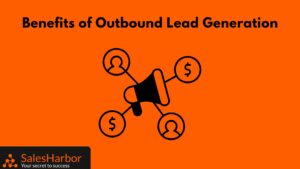
Inbound vs. Outbound Lead Generation
Inbound focuses on drawing in prospects through valuable content, while outbound involves actively reaching out to potential leads. A clear difference between these strategies is outlined in the table below.
| Aspects | Inbound Lead Generation | Outbound Lead Generation |
| Approach | Attracts customers through valuable content and experiences | Reaches out directly to potential customers |
| Cost | Generally lower cost; relies on organic methods like SEO and content marketing | Often higher cost; includes paid ads, direct mail, and cold calling |
| Time Investment | Takes time to build momentum; content creation and SEO are long-term strategies | Can generate quicker results; campaigns can be launched rapidly |
| Lead Quality | Typically higher-quality leads are self-selecting and already interested | May vary, leads are generated in larger volumes but may require more effort to convert |
| Scalability | Can be scaled gradually; growth often tied to content production | Easily scalable; can increase reach by expanding outreach efforts |
| Examples | Blog posts, webinars, social media engagement | Cold calls, email outreach, Google Ads, direct mail |
| Best For | Businesses with limited budgets or those building long-term relationships | Businesses needing immediate results or those with larger marketing budgets |
| Conversion Rate | Generally higher as leads are more interested | May require more nurturing to convert leads into customers |
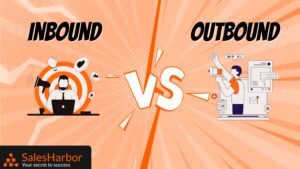
Conclusion
Both inbound and outbound lead generation strategies have their unique benefits. Inbound strategies attract leads through content and engagement, building long-term relationships and trust. Outbound strategies, on the other hand, involve direct outreach to potential customers, which can yield quicker results.
By understanding and leveraging the strengths of each approach—or combining them—you can create a comprehensive lead-generation strategy that aligns with your business objectives.
This knowledge will help students, professionals, and startup founders make informed decisions and effectively enhance their marketing efforts.
If you’re looking for experts who understand this industry and its challenges, reach out to us for a quick intro call and get to know more about how SalesHarbor can assist you. We can integrate your desired strategies into your business’s framework seamlessly.
Read another article on this topic by Blend B2B.


